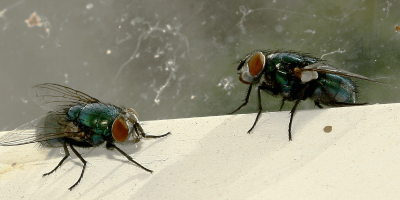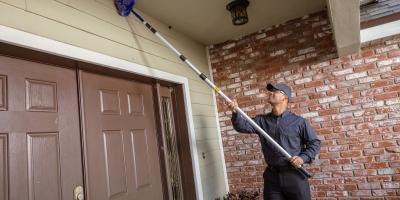Pest Management Challenges for Grocery Stores

Experienced business owners know that, for most properties, pest problems are more than just a possibility - they are likely an eventuality. For grocery stores, which tempt pests with just about everything they need to succeed and multiply, this challenge is even more pressing, and a poorly-managed pest problem can have long-last negative repercussions.
Fortunately, many modern grocers have found safe, effective, and customer-friendly methods of pest control and eradication to keep infestations at bay without hurting productivity or reputation. By focusing on solving a few key challenges at a time, grocery store and supermarket owners can keep their facilities pest free and open for business.
The first step in the process: to know which pests you’re up against.
Common Grocery Store Pests
The most common pests faced by grocery stores include German cockroaches, mice, flies, raccoons, pantry pests, storage pests, and birds. Although different in size and where specifically in your business they will target, each of these pests bring with them a number of health and property risks that cannot be ignored.
Some pests will come into your business directly from the outdoors, including birds and rodents who may be living in the nearby woods. They will most likely be attracted by garbage left outside the property, which can induce them to explore closer and closer until they’ve made their way inside.
Others, like flies and cockroaches, will come in with food shipments themselves, whether they hide among cardboard and in crates or are packed along in fresh fruit. Once inside, proliferation can be easy - especially when there are not proper prevention strategies in place.
Where Pests Take Root
Often, pest infestations settle into those areas most likely to be overlooked by everyday staff or a cleaning crew. Although out-of-the-way and sometimes far from high-traffic areas, these are the potential nesting sites that should in fact be watched most closely to prevent pests from getting entrenched.
These include areas under shelving units, behind appliances, pantries and storage rooms, high-moisture areas, bathrooms, cleaning areas, and by trash bins or dumpsters. Store departments most likely to be affected by pests include the meat department, produce, the bakery, employee break areas, loading docks, and trash disposal areas.
Prevention Is Key
Of all of the invasive pests that cause problems for retail food properties, all come looking for just a few basic things: easy access to food and water, and a hidden an relatively undisturbed spot to nest.
Obviously, grocery stores have no choice but to offer the former - food cleaning and preparation involves large amounts of water, and presenting fresh and ripe food in the open is the foundation of the business itself. But there are ways to minimize pest contact with fresh food and water, and it all comes back to having good cleaning regiments.
Stores should work with a designated pest professional to implement Integrated Pest Management practices. A good IPM program emphasizes prevention through proven, common sense solutions, such as:
- Following proper waste disposal practices
- Ensuring proper cleanup of food preparation areas
- Sticking to regular, accountable, and recorded cleaning schedules
- Undertaking regular employee training to ensure compliance with pest prevention strategies
- Moisture control and reduction of standing water
- Regular audits and assessments by a pest professional.
Grocery Store Pests and the FSMA
In 2011, the Food and Drug Administration passed the Food Safety Modernization Act (FSMA), which implemented strong guidelines for suppliers and retailers all along the food chain. Designed to shift focus away from reacting to pest problems and toward prevention, the FSMA requires food producers and importers to take regular, specific actions to prevent pests and foodborne illness along the supply chain.
Many of a grocery store’s suppliers are required to adhere to the FSMA, and grocers should be familiar with the process and look out for oversight or noncompliance with pest-prevention regulation.
Keep Pests Out By Keeping Prevention Front and Center
When it comes to keeping pests from infiltrating your grocery store, supermarket, or retail food facility, the best way is and has always been prevention. Apart from taking the time and energy to adjust cleanup and storage practices, many grocers find pest prevention success by working with a pest management professional.
If you are looking to implement regular and effective past management practices in your business, contact a pest control specialist today and start working to prevent pests - before the problem becomes an emergency, and before your customers (and business) feel the ill effects of a pest problem.



